
Sant’Onofrio al Gianicolo: A look inside Cardinal Pizzaballa’s new titular church
The church’s story includes some interesting nuggets from history
By tradition, when the pope makes a bishop a cardinal, he assigns him a titular church in the Diocese of Rome, a link back to the College of Cardinals’ roots as a consistory of the diocesan clergy in Rome.
Practically, the link with a cardinal remains important to many Roman churches themselves — while some are more modern buildings, many are historical and artistic treasures and their cardinal patrons can be an important help in raising money for their upkeep.
On Wednesday, Latin Patriarch of Jerusalem Pierbattista Pizzaballa took possession of his titular Roman church, Sant’Onofrio al Gianicolo.
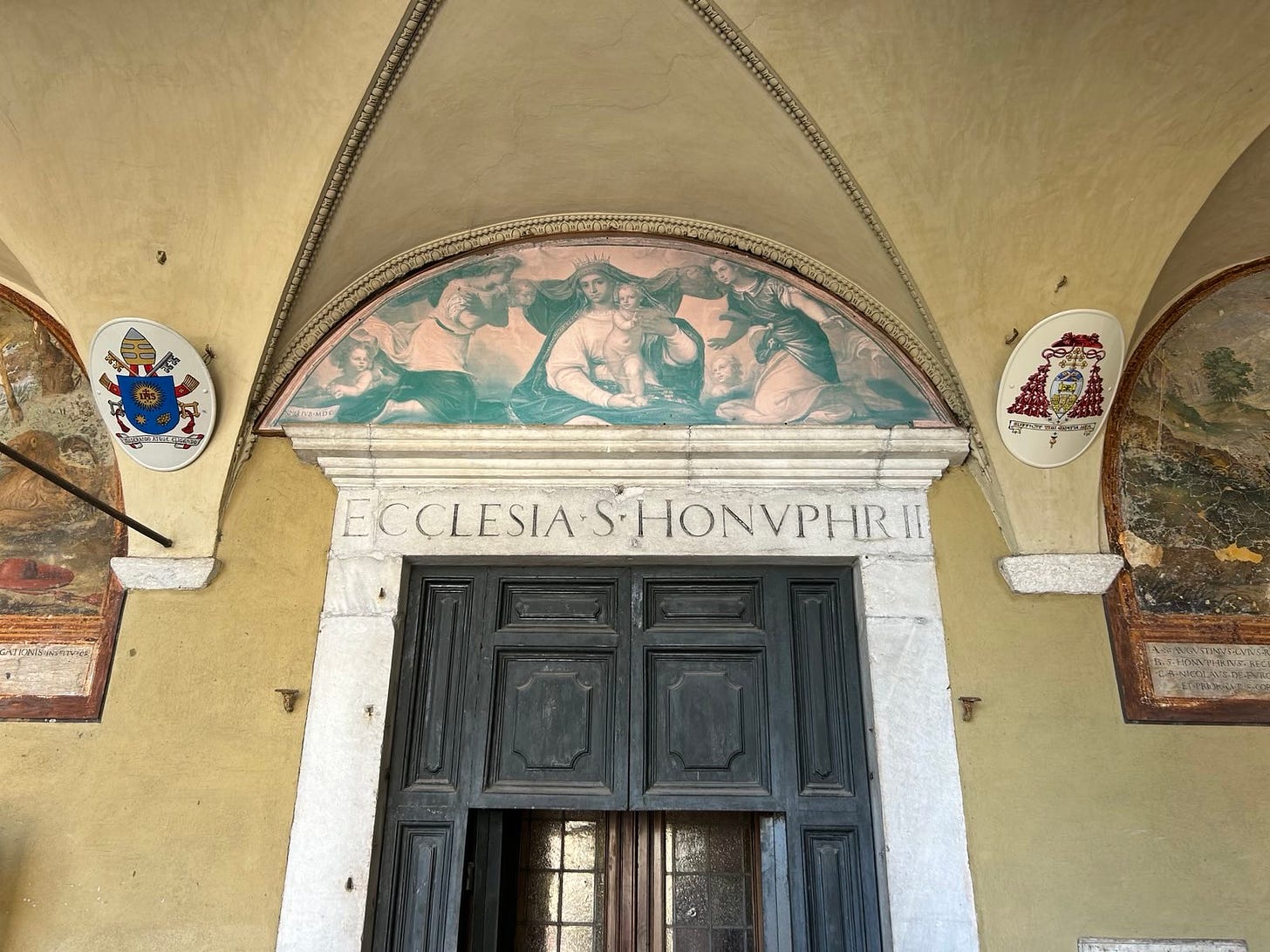
Sant’Onofrio al Gianicolo is not among the most well-known churches in Rome. In fact, it is often known for the steep road leading up to it, which might deter walking pilgrims at nearby St. Peter’s.
Still, the church’s story includes interesting nuggets of history, art, architecture, and even an award-winning poet.
Here are some fun facts about Sant’Onofrio:
In addition to it now being the titular church of the Latin Patriarch of Jerusalem, it’s also the official mother church of the Order of the Holy Sepulchre, a papal order of knighthood dating back to the 1100s that is today charged with helping provide for Christians in the Holy Land.
While one of the order’s former grand masters is buried in the church, today the site is run by the Franciscan Friars of the Atonement, a U.S.-based religious community dedicated to promoting unity and healing.
The Franciscan Friars of the Atonement were founded as an Anglican religious community, who were received into the Church in 1909 and given custody of the church and its attached monastery.
It’s named after the Desert Father St. Onuphrius. A 4th century hermit in Egypt, St. Onuphrius was the subject of great religious devotion in the Middle Ages, although his popularity has largely faded since then.
The site’s first religious use dates back to the early 15th century, when the land was bought for a hermitage by Nicola da Forca Palena, one of the co-founders of the Poor Hermits of St. Jerome. The church was added onto a monastery that was built on the site of the original hermitage.
While the church and monastery were both built in the mid 1400s, artistic and architectural features were added on in the centuries that followed, and the church is known for its blend of Gothic and Baroque styles.
The church contains five side chapels, which are larger in total area than the nave of the church.
The Italian epic poet Torquato Tasso spent his last days at Sant’Onofrio in 1595. He was staying at the monastery before a ceremony in which he was to be crowned poet laureate, in a ceremony arranged by Pope Clement VIII.
Instead, Tasso succumbed to illness just one day before the ceremony was to be held. The room in which he died is today preserved as a museum, featuring some of his manuscripts and personal belongings.
In 1873, the monastery was briefly seized by the Italian government, which used it as a pediatric hospital. The hospital, known as Bambino Gesu, was eventually relocated to the site next to the church, where it still stands today.




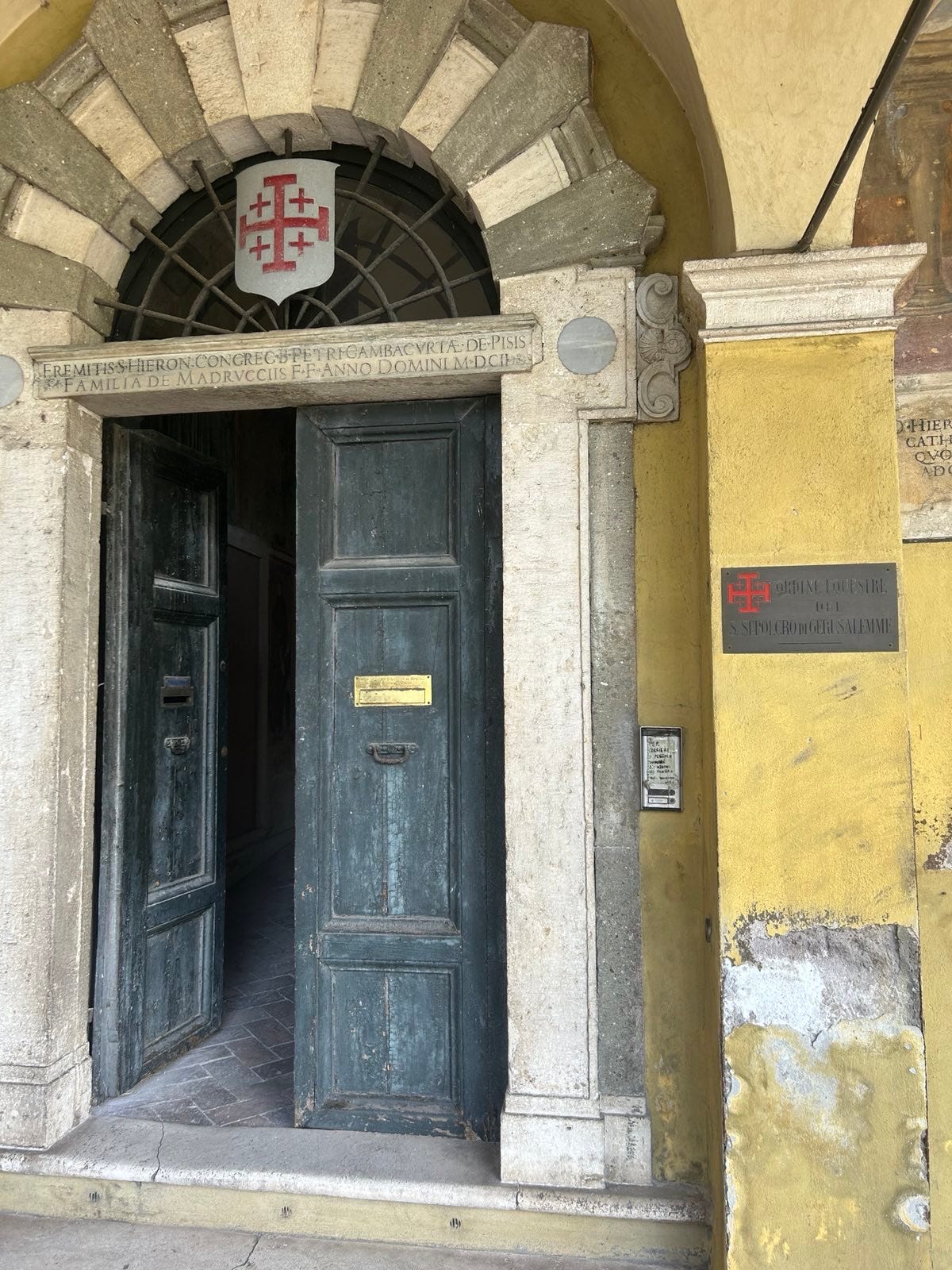
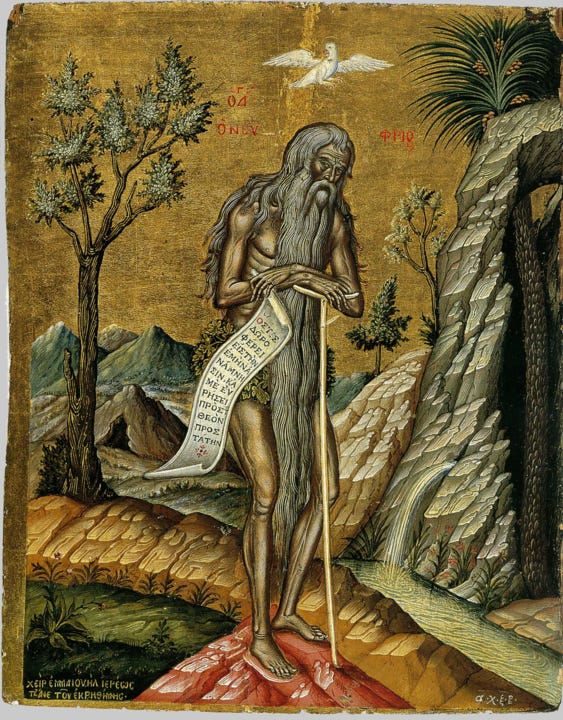
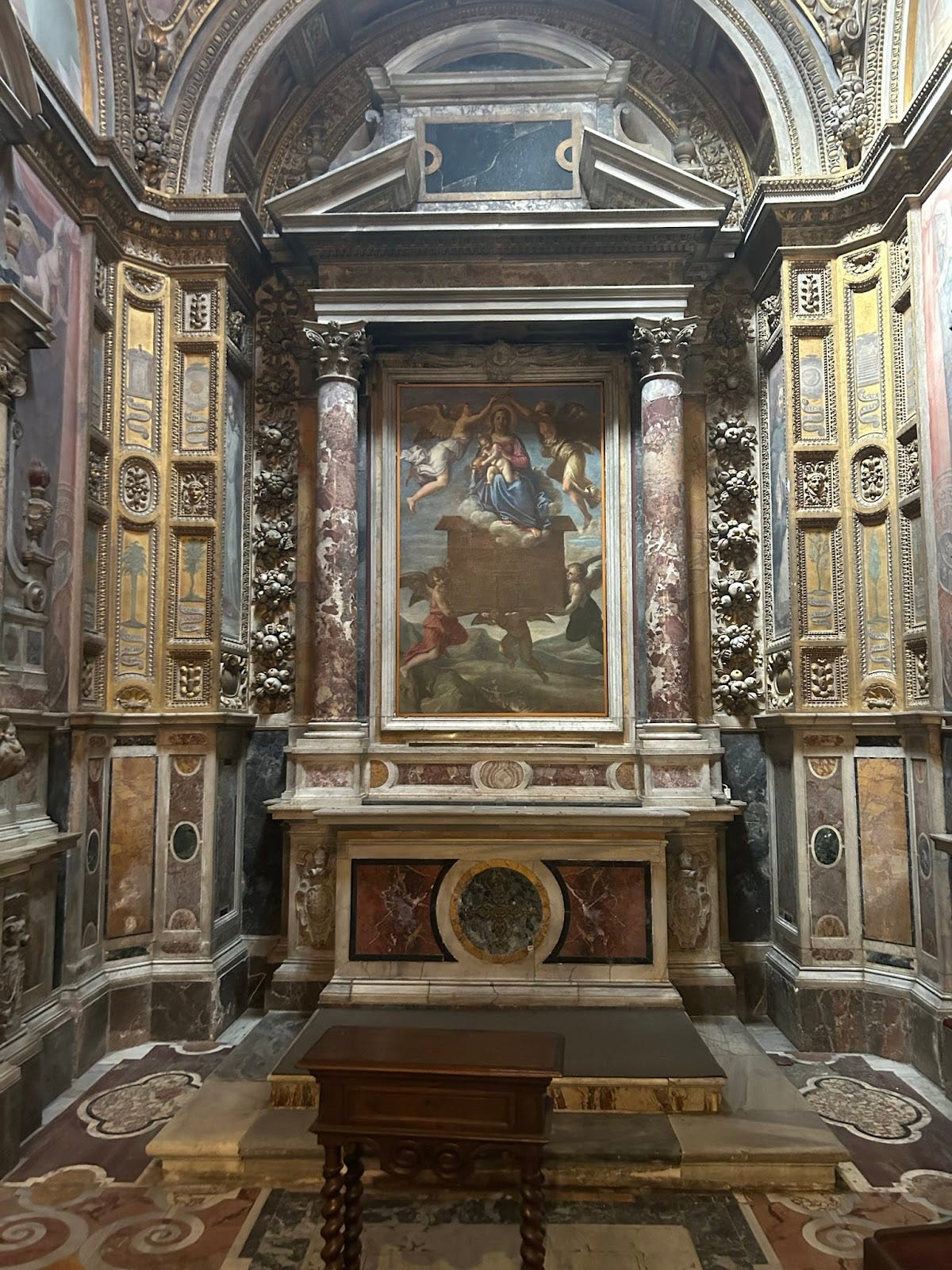
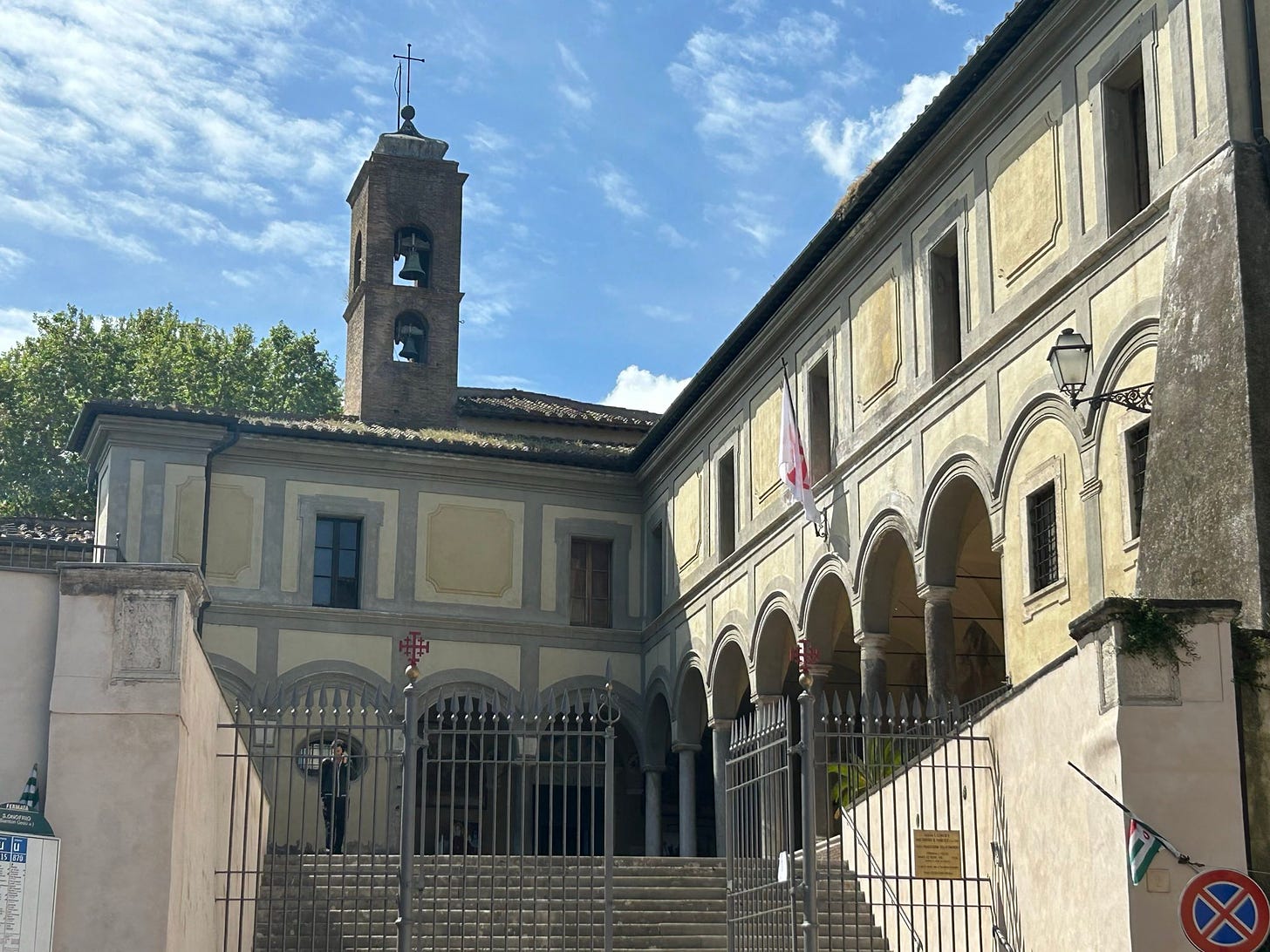








Sant’Onofrio is just up the road from the North American College, where many American seminarians live. Because it is run by an American branch of the Franciscan order, there are generally English speaking priests or brothers to speak with pilgrims and show them around. As a result, seminarians often bring guests there. Given that branch’s focus on ecumenism and inter-religious dialogue, it is fitting that a church they operate is the titular church of Cardinal Pizzaballa, who very much needs skills in navigating relations between different religions and between the different types of Christians in the Holy Land.
Marvellous church, but, let's be frank, you are really spoilt for choice over there.